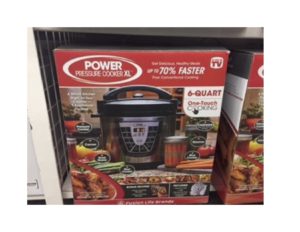What Is It About A New Product That Gets Customers’ Attention?
Despite the widespread and persistent demand for innovation, there’s very little definition of exactly what qualities a new product must have to attract customers.
Bloomberg has decided to slam the creators of a new juicing machine with an accusation they apparently deem to be fatally damning to an innovation: It’s not necessary.
They support this charge in a recent article, Silicon Valley’s $400 Juicer May Be Feeling the Squeeze. In it they the share the results of their own study: You don’t need the machine to get the juice from the packs of fruits and vegetables sold to be used with the machine. You can actually squeeze the boxes by hand.
But since when has necessity been the test for whether consumers would embrace and pay for a new product?
If that were true, would we have…
The Vacuum Cleaner? Not necessary because we can do the same work by hand with a broom.
The Electric Shaver? Nope. Razors do a great job. And new ones are popping up all the time with multiple blades, pivoting and swiveling heads and lubricating strips. The market for manual shaving products is still sufficient to exist alongside the electrics, sufficient to support not only the entrenched giants like Gillette and Schick but also new companies with innovative marketing and positioning like Harry’s and Dollar Shave Club.
The Electric Coffee Maker? No way! Manual methods like the French press, Melitta and Chemex still make a fabulous cup of coffee — some would say better than the early-to-the-party percolator , 70s-style Mr. Coffee  or any of the ubiquitous one-cup machines that have found their way onto everyone’s counter.
or any of the ubiquitous one-cup machines that have found their way onto everyone’s counter.
The Power Pressure Cooker? Counter Top Electric Grills? The electric toothbrush? The electric guitar? Nope.
The fact is, it’s never been a requirement that an innovation be necessary — that it must perform a function that is not possible with manual methods.
Rather, the test is simply this: Does the innovation create sufficient value — i.e., do the job faster, better, cheaper or just in a more interesting and satisfying way — to a degree that it justifies the price charged?
And, with product updates the landscape is constantly shifting, forcing consumers to repeatedly revisit the value-price calculation. The iPhone and MacBook came with groundbreaking, beautiful design. But fast-following competitors soon took that advantage away with sleek, brushed metal cases of their own. PCs came with lower prices and Android phones brought a larger screen users liked. It took the iPhone awhile to follow with the bigger screen, and it remains to be seen how much of the market believes the value of the MacBook experience and service-included policy justifies the higher price.
I don’t know how the new juicer will fare on the value-price test. The article does point out that the machine now costs $400 dollars, down from $700. Would Bloomberg’s opinion be different if the price were $199? A warmer reception after a price reduction wouldn’t have anything to do with the a change in the perceived necessity of the machine, but merely the consumer’s revised value-price calculus.
It’s significant that one of those interviewed for the Bloomberg article — the proprietor of a store selling juice and other products to health conscious clientele — paid $1,200 for the machine, and she’s not complaining about it. She’s undoubtedly determined — consciously or not — the value it creates in saving time and energy preparing drinks for sale to customers is sufficient to be worth the price.
Time will tell if this juicer makes its way onto kitchen counters and, if it does, whether it stays there. Ultimately, the value-price calculus will depend on the effective communication of features, advantages and benefits and smart pricing.
Consumer acceptance to the elite club of daily-use kitchen power tools is a long game. Just ask the inventors of the electric knife and can opener.
___________________________________________
To get a better handle on what your own customers expect from your product enhancements, get your FREE Self-Paced Business Boot Camp.
